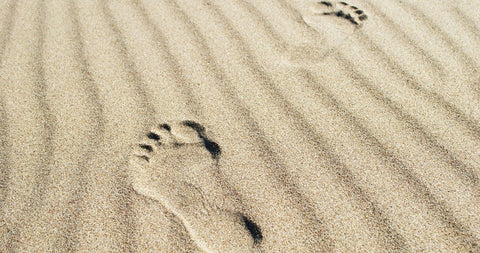
Hard Skin on Feet & Cracked Heels
Hard skin on your feet is protective, but it can be unappealing, due to colour changes and peeling. In some people hard skin can form lumps and cracking may occur. If you battle with cracked heels and hard skin and still haven’t found a way to keep your feet smooth and nourished, then check out our helpful tips to help you to manage hard skin.
This is not a diagnostic tool. this healthcare professional does not endorse Scholl products and were paid by the makers of Scholl for their time in producing this video
What is hard skin?
Hard skin can look different for different people, but it often appears as thick rough patches of skin that are yellow to brown in colour. The area’s most likely to be affected are heels, toes (especially little toes), and the ball of the feet where the skin is most likely to rub against something like a shoe and the most weight is placed as you walk.

What causes hard skin?
Hard skin can occur because of a lack of moisture in the top layers of the skin and friction. It is more likely to be found in people who place extra pressure on their feet (athletes, people who carry extra body weight and those that work on their feet for long periods), older people, those who use harsh soaps and detergents, people who spend a lot of time in dry environments with air conditioning or central heating and people that wear poorly fitted shoes (for instance shoes that are either too small, too loose or if there’s a constant friction between the shoe and skin).
Repeated heavy pressure from activities like running, walking barefoot or spending long hours on your feet as well as the constant mechanical irritation, ill shoe fitting, wrong style of footwear and not using moisturiser for the feet can cause hard skin to develop. If left untreated, the build-up of hard skin can lose its tensile ability for stretching, it can reduce sensitivity over time, and become dry, swollen or even cracked.
Tips for avoiding and managing hard skin
To help avoid hard skin, try the following:
- Wear comfortable shoes that fit properly.
- Always dry and moisturise your feet well after showering or bathing.
- Wear gel insoles if you’re prone to hard skin or work for long periods of time on your feet.
To explore related products, click here.
UK/SC/0319/0049o
